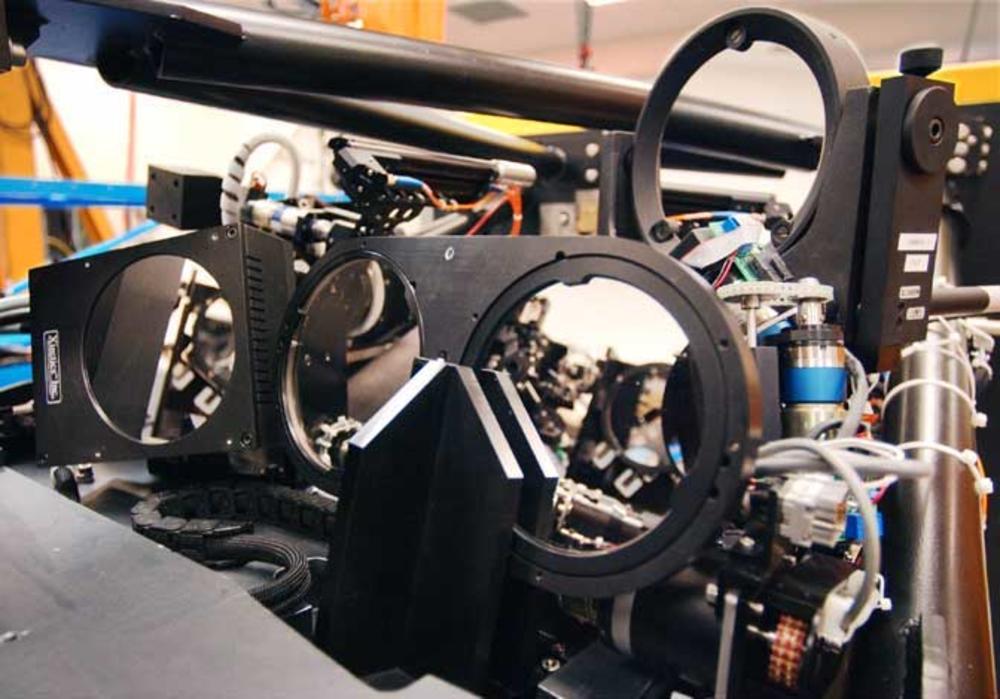
Capability Summary
Natural Guide Star (NGS)
- Guide star magnitude limit
- 11-12 mag for full correction
- 15-16 mag for partial correction
- Core FWHM~0.08"
Laser guide Star (LGS)
- High Strehl correction limits
- Guide star magnitude: 8.5 < R < 15
- Guide star within 15"
- 50% of NGS Strehl
- Low Strehl correction
- Guide star magnitude: 15 < R < 17.5-18.5 (depends on SB)
- Guide star within 25"
- Strehl of ~10%
Super Seeing (LGS+P1)
- Improves IQ by a factor of 2-3 over the natural seeing (on-axis)
- P1WFS magnitude limit: R ~ 14
ALTAIR was built by the Herzberg Institute of Astrophysics (HIA), Canada. ALTAIR Natural Guide Star (NGS) function has been offered since 2004A. In 2007A, the ALTAIR Laser Guide Star (LGS) commissioning was completed.